Note: This is originally from Frontier Friday, a weekly Substack published, originally released on 12 Jan. 2024
Developing a Motif
Most of the people I’ve met in my clinical practice this week do not have a new year’s resolution. This is intriguing to me, given that in the past years, I often hear reports from my clients about their goals and plans for a “new me” during this season.
“There’s no point,” one teenager said to me. “I’ve read that the success rate of setting a new year’s resolution is like, very low.”
Turns out, she’s right.
One of the contributing authors to our book, The Field Guide to Better Results, psychologist John Norcross studied the outcomes of people who made New Year’s resolutions. Norcross and colleagues found that while more than fifty per cent of participants made some sort of resolution, after six months, only 40% had stuck with it. Two years later, the number had dropped to 19%.
Writer Maria Konnikova noted,
Gym attendance peaked in January, they found, and decreased in the following months. Smaller spikes occurred at the beginning of each week, each month, and each term.
Why does the promise of “Fresh-Starts” at the new year fall flat? If we tend to fail dismally in making new year’s resolution, what is the alternative?
The Alternative
Instead of making new year’s resolutions, make a theme for yourself.
We tend to overestimate our ability of carrying out our goals for the year, and underestimate what life throws at us in our daily life.
The same young adult who reported about the low success rate our January’s resolution was debating about whether to continue her tertiary education. It was her final year. She finally came to a resolve that he would bite the bullet and go to the finish line with his formal education, albeit feeling like he wasn’t really learning anything useful. Then she added, “I still wanna learn more about videography and photography… editing and stuff…”
I thought it was marvellous she was motivated and hungry, wanting more for himself. If there was one thing you can do for yourself, is to prove to yourself that you can do hard things.
So I suggested the following:
- In school, you are told what to learn.
- In life, you need to figure our what you wanna learn.
- So, why not design your own learning curriculum?
She liked the idea. She now needs to map this out, the kind of stuff she’s interested to learn more about, and how she’s going to organise her “school of life” outside of school.
But that’s not the end. I asked her what’s gonna keep her on track, she instinctively said, “I need to have a theme… to keep me motivated…and paste a sticky note in my bedroom to constantly remind me for the year ahead.”
That was her homework. Come up with a theme.
That’s your homework too. What’s your theme for the year?
Thinking in Seasons
Every season has its own needs.
If we are to pay close attention to the signs of our times, we will notice different developments and particular types of unfolding happening around you and to you.
One way to gain perspective of this is to think about
- “Where you have been,” so that you can see
- “Where you are now,” so that you can figure out,
- “Where you are going.”
This reflection process needs to be as concrete as possible. In other words, if you don’t have a clear picture of “where you have been,” we would be prone to recency bias (i.e., favouring recent events at the expense of older events).
Here is how you can begin the process: Capture your highlights in weeks.
Capture Your Highlights
Here’s what you can do, sequenced into 3 steps:
1. “Where You Have Been.”
- Review your calendar in the previous year.
- Jot down your highlights for each week.1
- For each month, based on the highlights, capture any personal learnings.
- Now zoom out to the year, review each of the 12 months, and consolidate key learnings.
- Finally, looking back at the previous year, if this was a movie or a book, what would you name this as? What is the theme? What is the running chorus? What is the motif of the previous year?
To help you with the process, feel free to use a this template I’ve been using called, Highlights in Weeks.
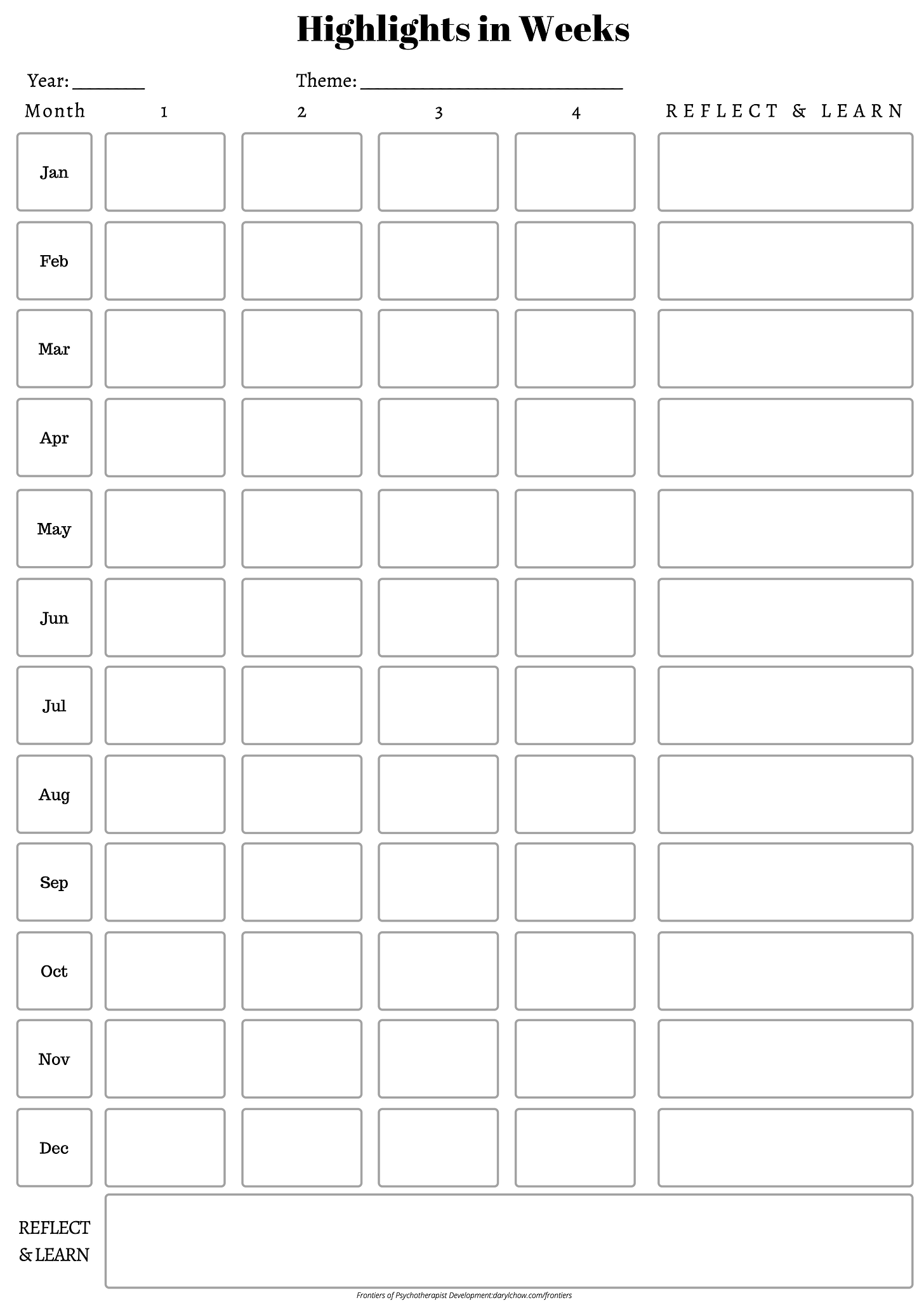
2. “Where Are You Now.”
- Now that you’ve done a stock-take of your previous year, take a moment to review your learnings from the previous year.
- Make a commitment to capture ONE HIGHLIGHT per week.
- A highlight consists of either, a high-point, a low-point, or a turning-point. An external event or an inner-discovery can be noted down.
3. ”Where You Are Going.”
- At the end of each month, review and note down any personal learnings from what has transpired.
- Finally, now that you’ve reviewed the previous year, your mind is more primed to get a sense of where you are at, and potentially where you need to go, give a name to the theme for the coming year.
- A theme/motif/chorus (or whatever synonyms you can think of) for the year could come in a name or a sentence. Something that encapsulates your intention for the year.
A Sample of My Highlights in Weeks
To give you a sense of how I use the Highlights in Weeks template, here’s a sample of mine taken over the last few years, taken from my other site, Frontiers of Psychotherapist Development (FPD)2:
2018
Private Thoughts (Part I)
Personal Learnings (Part II)
2019
Personal Mistakes (Part I)
Personal Learnings (Part II)
2020:
Looking Back at 2020
2021:
Looking Back at 2021
Why Themes?
Around 2020, I was taken by the idea of naming each year by theme. This was stolen from basketball coach Phil Jackson when he was working with the Chicago Bulls (see the documentary, The Last Dance, which was the theme he gave the team in their final season of playing together).
Thinking in themes is like a navigational device. Like a map paired with a compass, articulating your own theme orients you to where you are and where you are going. Instead of specific goals, it provides you an overall sense of directionality.
For instance, in 2020, my theme was “Raising the Stakes.” This was my attempt to deliberately step out of my usual sphere (i.e., comfort zone), and edging more towards my learning zone. I was really trying to be informed by intent, and less by fear.
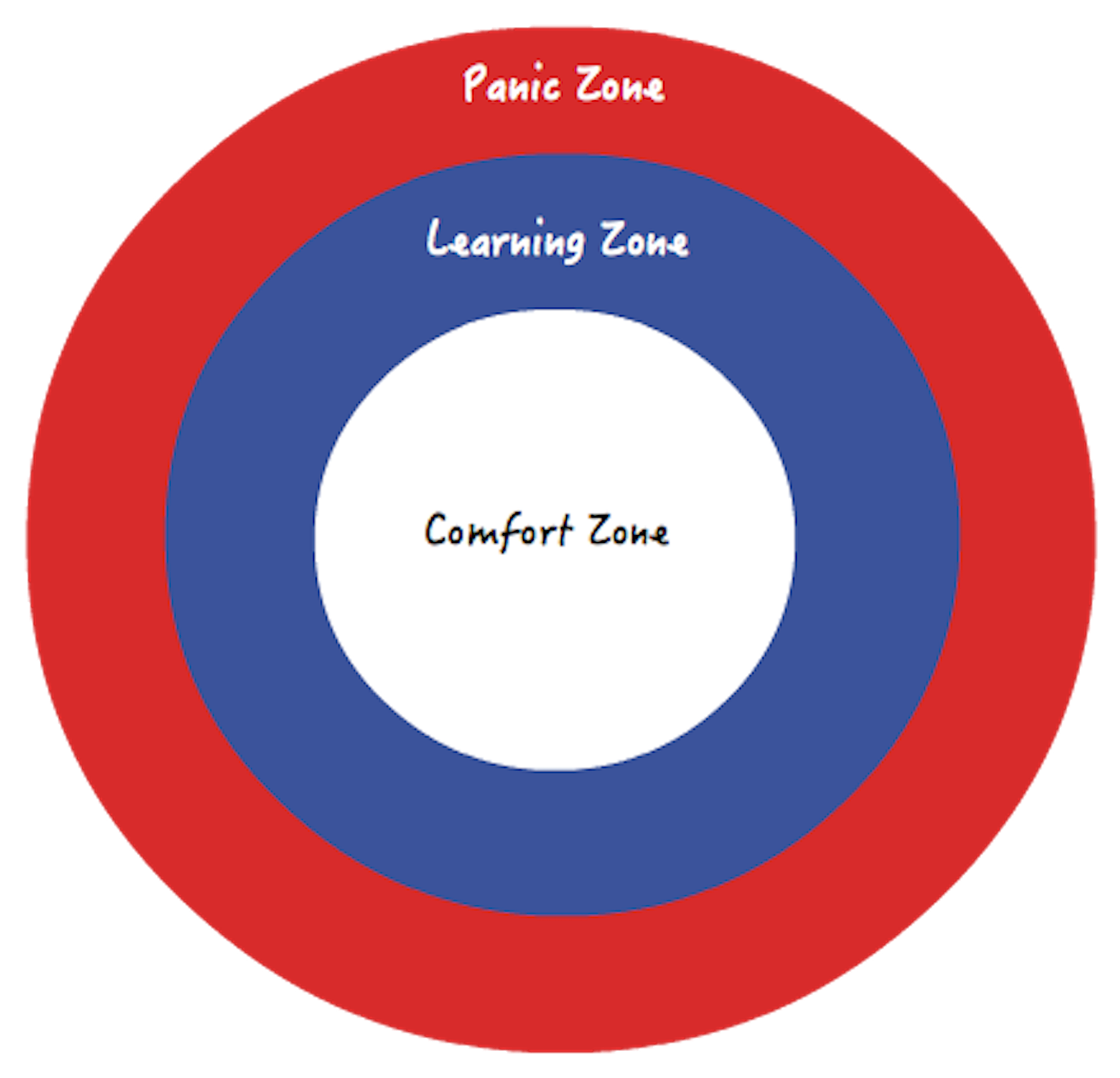
This meant that I would intentionally put myself to do things I am likely to over-analyse and ruminate on, and instead to just go ahead and do them (e.g., release Frontiers podcast and videos, aimed for psychotherapists).
And then in 2021, my theme was “Upstream.” Here’s what I wrote about this motif:
“Upstream” served as a counterpoint to fire-fighting, downstream type of work that I can get easily sucked into. Upstream meant that I invest time in making things that are going to serve my intentions well into the future. By design, this also meant that it would be harder at the early phase, but the pay-off will be higher in the long-term.
I’m influenced by the authors Dan Heath’s book Upstream, poet and author Mary Oliver with a prose of the same title, and Roman Krznaric for The Good Ancestors that really made me look beyond the “now” and into the “long now.”
One practical principle I derived from this “Upstream” theme: Make big decisions to avoid small decisions.
This statement is now in my daily planner notes to remind my monkey-mind when I’m busy fire-fighting stuff.
Here’s some concrete translation on this theme of Upstream thinking:
For instance, for the longest time, I’ve felt the inclination to write and produce more books. Writing is certainly a gruelling process – but also highly gratifying. It has become a way of sharpening my thinking, as I not only write what I think I know, but I write in order to know.
On a clinical practice level, instead of making a decision on a week-by-week basis, I’ve since made the “big” decision in 2020 to have a 15min gap between clients. This means that I probably see 1 less client per day, and I end the day slightly later around 6pm. That said, this feels more sustainable for me. The 15min gap also allows me to finish case notes, to recompose myself and gather my thoughts for the next client. And if my time management is off, I have that grace period to play with.
I’ve also made a decision around my daily/weekly habits. Instead of reacting to things, I’ve roughly designed my days that stays close to my intent (e.g., solitary work, clinical practice, teaching, family time, creative time). I’ve also continued to block access to my inbox between 11pm to 12pm the next day. I’ve used the app Freedom.io to prevent me from knee-jerk checking of my emails during those stipulated times (Irrationally, I’ve found workarounds to send and receive emails during my blocked periods!)
I have yet to publish my Highlights in Weeks for 2022 and 2023, but for now, 2022 was “Shortcuts.” The reason for this theme was because I felt at that season of my life, I was taking way too long to get things done, and still deliberating far too long on projects (an issue I faced in 2021). I felt I was overcomplicating things.
In addition, I was also fascinated by people like nurse and statistician Florence Nightingale, who used vivid graphs to back her public health campaigns.
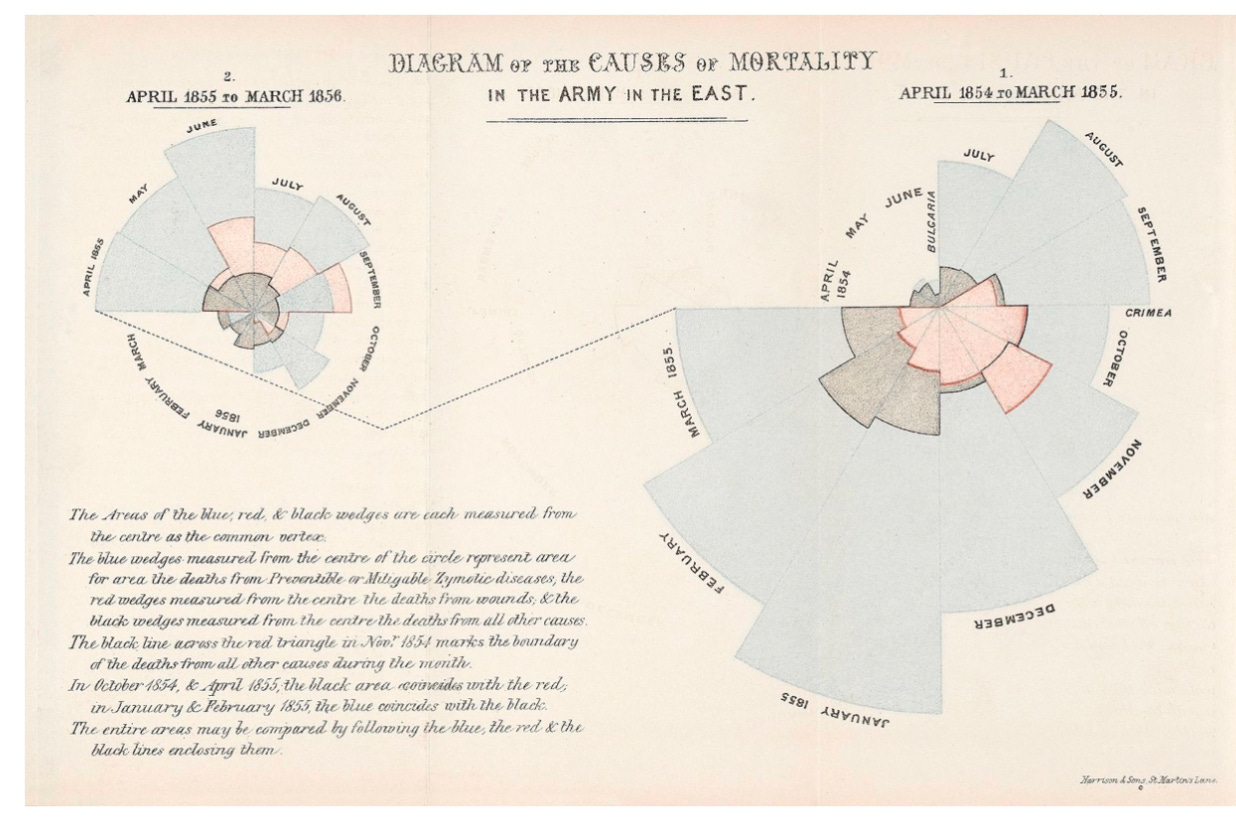
They was so much to learn about how I could use sketch notes and visual to communicate more effectively. I turned to people like Doug Neil to convey ideas through simple sketchnoting. I learned as much as I could from Doug’s videos so as to get me started.
Here are some of my examples that I’ve used:
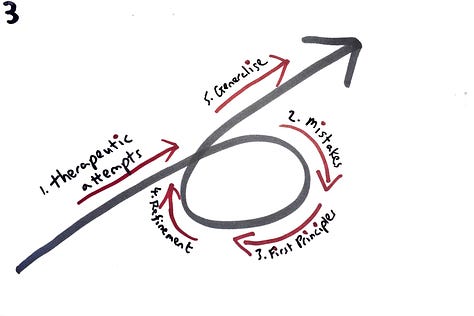
In 2022, the theme was “Risk-Write.” The reason for this theme was because I really want to included in my writings more from my own perspective, tell stories that have impacted me. In other words, I was trying to undo how I was taught in academic writing, which boiled down to not using “I” in my writings. Instead, I want to flip that upside down and open up the gateway, allowing for more of me to come forth.
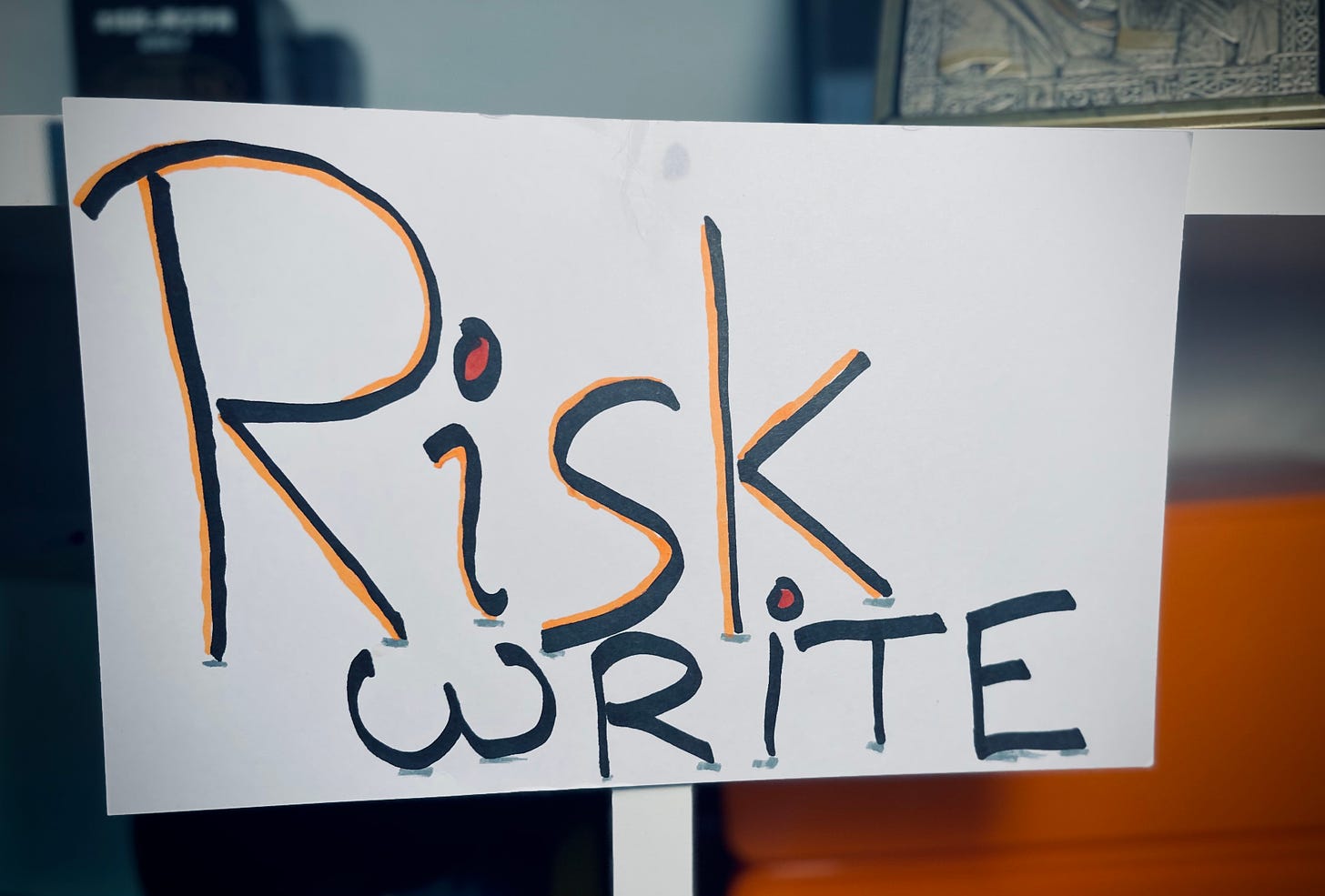
I definitely didn’t want to be self-indulgent, but at the same breathe, when I think about some of my favourite authors, they put themselves on the line.
Here’s own of my attempts in Fullcircles, Stumbling into Self-Forgetting.
Moving and Being Moved
Now that you get a sense of how to use the Highlights in Weeks chart, and how to formulate a theme for yourself, please note things don’t go as planned. Designing our direction in life is not a force of will, but instead, it is the juxtaposition of moving and being moved.
‘Moving’ implies acting upon our intentions. ‘Being moved,’ on the other hand, is to allow ourselves to be touched and inspired by what unfolds in front of us, even when—or rather, especially when—it is not our choosing.
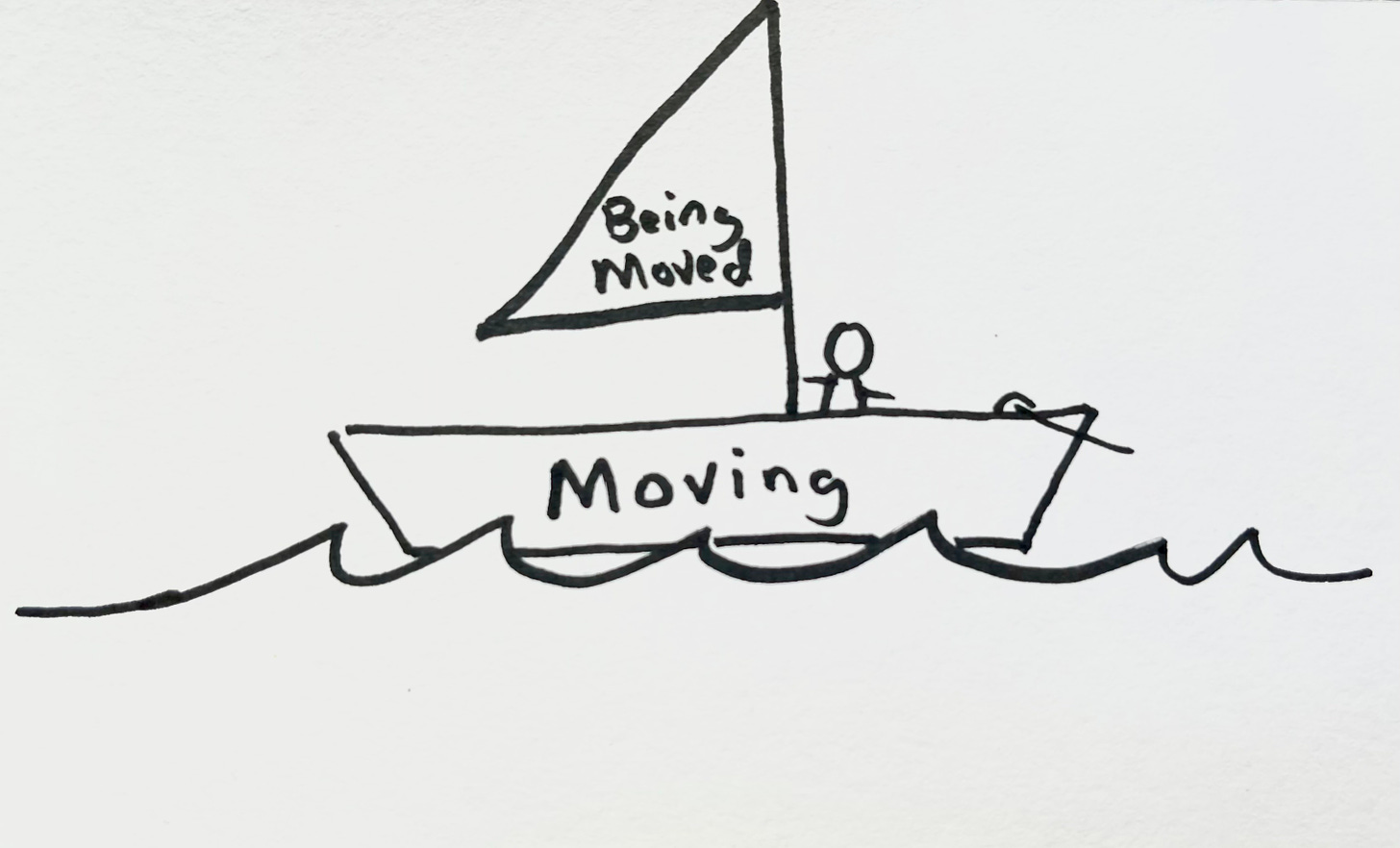
To move is to resist becoming the victims of our circumstances. To move is an act of will and responsibility. To be moved is to allow ourselves to touched by what’s in front of us, and utilise that as a mobilising force.
Researchers in human emotions offers a fascinating insight. A review article by Janis Zickfeld and colleagues3 suggested that being ‘moved’ should be treated as a “distinct emotion.”
Sensations of being moved include tears, chills, lump in the throat, goosebumps, warmth in the chest. When seen in this light, it’s easy to understand why the experience of being moved is often considered as passive experience, i.e., not something we can actively control. Let me do my Chinese teacher proud and point out that in Mandarin, “being moved” Gǎn Dòng [感动], literally translates “to feel movement.”
Another interesting pattern emerged from the body of studies. The lexeme being moved not only fosters approach and prosocial tendencies, but also lead to “insight, meaning and personal growth.”
Unlike a massive corporate tour bus, there is no fixed path to this. We must honor our nature, which comes with our gifts and constrains. And we must pay attention to the signs of our times.
2023 Motif
With that, at this chapter of my life, I resonate with making the theme for myself to be “Make it Easier.” According to my wife, the Asian work ethic in me has not declined even after moving out of Singapore.
I see some early signs of this playing out. I don’t want to burn out, and neither do I want my family to be left with crumbs of me at the end of each day.
In a future post, I will take about a particular learning that struck a chord in me to think about not pushing a “100%.”
With that, I wish you, dear reader, a wonderful journey ahead, to move and be moved by all that you love, and all that is calling out for you.
Bon Voyage.
How come I end up where I started
How come I end up where I belong
Won’t take my eyes off the ball again
You reel me out then you cut the string.
~ 15 Steps, by Radiohead.
p/s: Once again, here’s the link to download the template for Highlights in Weeks Template.
If you would like to learn more topics that can help your professional development, subscribe to the Frontiers of Psychotherapist Development (FPD). On Frontiers Friday (FPD), we serve you directly to your Inbox highly curated recommendations each week.



Recent Comments